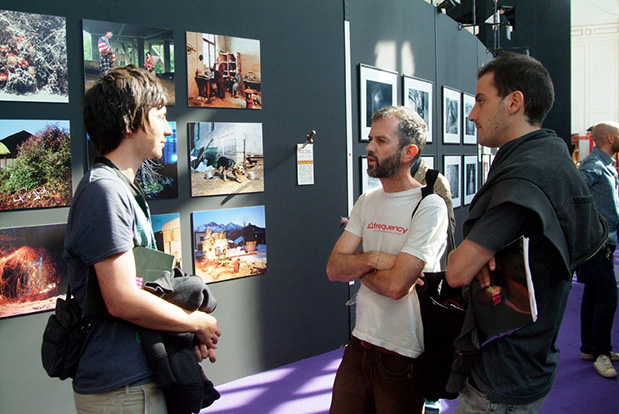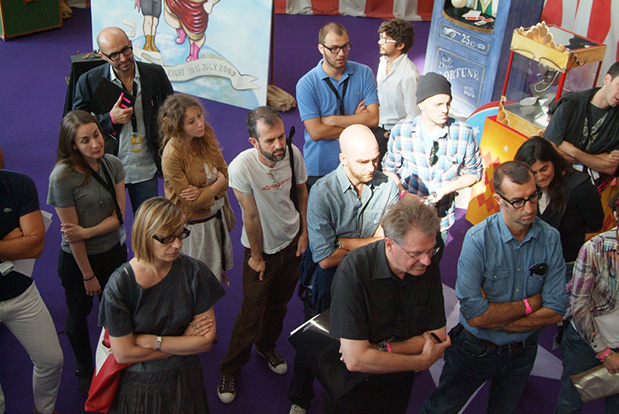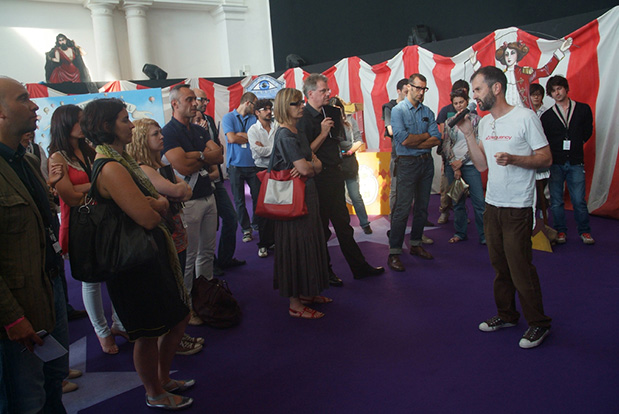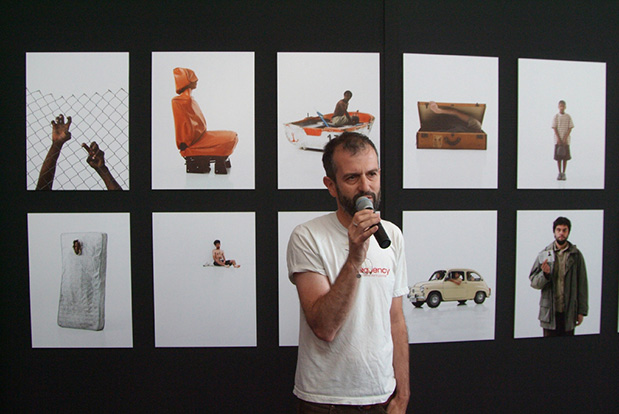
He began in the late seventies in New York printing photographs for Andy Warhol. He shot the most intimate pictures of Jean-Michel Basquiat and collaborated with Run-DMC and The Beastie Boys. He documented the rising hip-hop scene in New York. Skateboarders, snowboarders, surfers, artists, musicians and people living on the edge in general are among his main subjects. He is also a filmmaker and produced several short movies including the recently released “Seventy-One Percent of Earth”, created in an effort to raise awareness on the ongoing destruction of oceans and foreshores around the world through commentaries from professional surfers. He did all of this and more, yet when you meet him the first impression you get is “ok, this is not that man, I am mistaken and this guy in front of me isn’t photography icon Ari Marcopoulos”. He’s totally understated. You would not pick him out of a crowd. But he has a funny way of looking at people and things. You always have the impression his eyes are searching for something. He looks at you and you feel as if he’s looking for something INSIDE you… Ari Marcopoulos doesn’t like to stay on the surface of things, that’s for sure.

The ITS#EIGHT photography finalists couldn’t believe they had Ari Marcopoulos as president of the photo jury, giving them positive criticism, professional advice on their work and offering contacts with magazines. We couldn’t believe we had him in the photo jury. The winner of the MINI Clubman Photo Award Saana Wang still can’t believe she will be working with him on a photoshoot, travelling together in a MINI in the beginning of September. Amazed as we all were, luckily we did not forget to ask him a few questions. Here’s the outcome of our interview:
The first question is obvious: When did you decide you would become a photographer?
I don’t exactly know, probably when I was around 18 years old it became clear that I was interested in films and photographs. I bought a camera and I guess that is where it started.
The second one is almost as obvious: When was it that you realised everyone around you professionally recognised you as a photographer?
When my photos started appearing in magazines and people would comment on them.

Before even thinking about photography, was there something else you would have loved to do in your life but didn’t?
To be an anarchist!
When did you start shooting skateboarders and snowboarders and why? What caught your attention?
In the early nineties, and just the way they function within groups is what I liked. A group of people connected by a passion for their activity.
What do you like the most of these two sports? Do you play them?
I don’t think they are sports, to me it is more a form of expression and then it has to be called sport for the competitive element. But it really is a lifestyle..I try to skate but I suck, snowboarding I can do a whole lot better.
Is there something you definitely decided not to photograph anymore?
No, everything is worth photographing, never say never. It doesn’t mean that I photograph everything. Anything one sees can be a picture.
Is ITS as you had imagined it? Better? Worse?
Imagined what? Nothing is ever as I imagine it. Sometimes things are better, sometimes things are worse, sometimes things are just plain.

Is the jury work a tough one? Is there anything you would add or change in the evaluation process of ITS?
Jury work I think is always tough, because you have to make difficult decisions. All the finalists are talented and only one person can win. Plus a jury is a collective experience so more then one person has to agree. For me it is hard enough to make up my own mind so if there are more people involved then it is more complicated.
We would like to end this article by including the email we received from Ari after the event, commenting on his ITS#EIGHT experience:
I am on my way back home. Please let everyone know that I had a great time. Thank you for all. The event is very well organized and Pablo took super good care of us.
I hope you were all pleased with me as president of the jury. I did my best to give all the contestants some time and positive criticism and advice. I tried to keep the voting process open, fair and give space to all jurors to express themselves. I think in the end all of the jury were happy to give the prize to this year’s winner.
I think people had some different favorites, but all recognized that our winner is passionate and talented.
Please thank everyone for me.
Warm regards.
Ari Marcopoulos